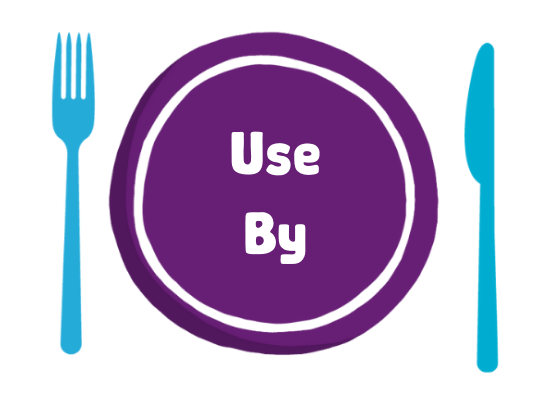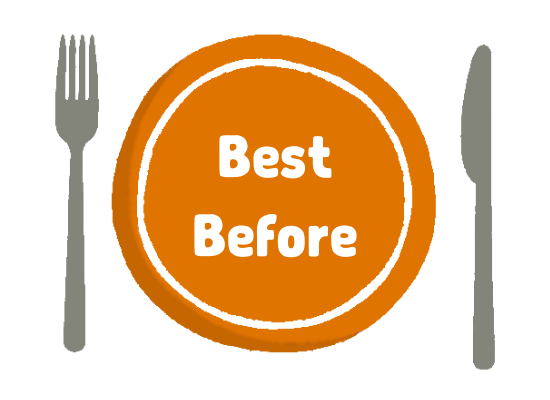How often have you thrown out food that was passed it’s ‘Best Before’ date? Would you like to know how to safely prepare and store food?
On the food you buy, how often do you check the ‘Use By’ or ‘Best Before’ date and wonder what the difference is? Do you know what these dates mean for the safety or quality of the food being consumed? Use by and Best Before dates on food can often be confusing. Keep reading to learn about the types of foods these dates apply to, what they mean and what Foodbank WA does with food near these dates.
‘Use By’ is the critical date mark as it signifies when a food must be consumed by for health and safety reasons. It is used on highly perishable foods, such as ready-made meals and items that are classified as high risk upon expiration. We do not distribute food at risk of exceeding its ‘Use By’ prior to being consumed. ‘Best Before’ is used to indicate quality rather than safety. It identifies the date after which food exceeds its peak quality.
‘Best Before’ dates are found on food such as fruits and vegetables, dried pasta, rice, tinned and canned foods. It is perfectly safe to eat food past its ‘Best Before’ date but some of its quality, flavour or texture may have been lost. Some of the food that we distribute is past its ‘Best Before’, however, we have worked with our manufacturing partners to ensure we meet their internal guidelines and that product is still safe to consume and the quality will not be unduly affected. The items must also comply with all our other requirements ensuring they are safe to consume with no damage to the packaging and having been stored under appropriate conditions.

‘Use By’ dates
- Critical date mark showing when a food must be consumed by
- Used on highly-perishable foods including ready-made meals, meat, dairy and cooked food
- After expiring, food with a ‘Use By’ date can be risky to eat as it may contain harmful bacteria or be dangerous to eat
- It’s unsafe to keep food that has passed it’s ‘Use By’ date even if it looks perfectly fine
- Frozen food can be kept if it is frozen before the ‘Use By’ date and can normally be kept for up to 18 months after freezing

And ‘Best Before’
- Suggested date mark showing when a food starts to lose some of it’s quality or flavour
- Used on foods that aren’t dangerous to eat if they pass the ‘Best Before’ date
- Normally used on canned or tinned foods, packaged products, long-life juice or milk, fruit and vegetables and pasta
- Generally safe to keep for up to six months after the ‘Best Before’ date has passed
Ensuring you prepare and consume food safely with other food safety tips
‘Use By’ and ‘Best Before’ dates on food aren’t the only important thing to look out for when you prepare, cook and eat food at home. Do you know which foods you should wash before eating? And how often do you defrost meat on the bench or under water?Read on for our top five food safety tips.
Tip 1
Wash your hands for 20 seconds with soap before cooking and after you touch your hair, nose, eyes or raw food or after you smoke, pat your cat or dog or go to the toilet.
Tip 2
Wash fresh fruit, vegetables and herbs before eating. Don’t wash meat, fish, chicken or eggs. Use separate chopping boards for raw meat, seafood and vegetables. Do not use any food if it has passed the ‘Use By’ date.
Tip 3
Keep food out of the ‘temperature danger zone’ between 5 and 60°C, so keep cold food in the fridge or freezer and hot food should stay warm before it goes in the fridge. When you defrost food, don’t let it defrost on the bench or under water, leave it in the fridge or defrost in the microwave.
Tip 4
When storing hot leftovers, only put them in the fridge after they have stopped steaming. Check your leftovers in the fridge and only keep it for 2-3 days before freezing or throwing them out. You should only refreeze defrosted food if you defrosted it in the fridge.
Tip 5
Take special care with your high-risk foods. These foods should be stored safely and not eaten after they pass their ‘Use By’ date. High-risk foods include:
- Dairy products like milk
- Raw and cooked meats and seafood
- Premixed salads
- Cooked rice and pasta
- Food containing eggs
- Ready-to-eat meals like sandwiches, rolls and pizzas
Help reduce food waste and donate foods marked ‘Best Before’ to a Foodbank Branch near you
 Contact us
Contact us Log in
Log in